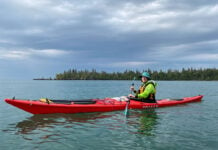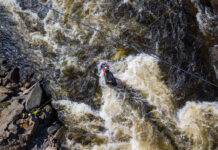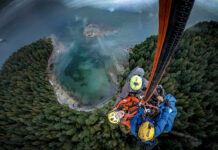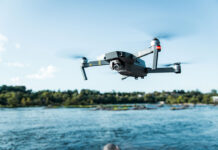Late fall is a great time for paddling—there’s no bugs, no crowds and no need for advance reservations. But the chilly weather comes with it’s own set of challenges. Help prepare for off-season paddling with the following tips.
Dress appropriately.
Paddlers who are immersed in water loose body heat four to five times faster than in air of the same temperature. The ACA recommends that you wear protective clothing, such as a dry suit, if both the water and air temperature are below 60 degrees Fahrenheit. While canoeists never expect to find themselves in the water, a swim at those extreme temperatures can lead to hypothermia in just minutes. Protect yourself. In addition to the protective clothing you wear, keep spare, dry clothing sealed in a dry bag. Learn more about protective clothing for cold weather paddling at the ACA here.
Eye on the temperature.
Open water can turn to ice overnight if the temperature drops low enough. Shallow areas and sheltered waters are the most likely places for this to occur. Iced-in paddlers can try waiting for the sun to thin the ice or can try hacking their way out with an axe or branch. Using your paddle isn’t recommended (it could break and you’ll need it to get home) nor is ramming the ice with your canoe. Getting iced-in can mean having to walk out—plan your route accordingly.
Flexible route planning.
Let the weather forecast aid in planning your late season trips. If high winds are expected, stay off large lakes. If the temperature is dropping, avoid travel through creeks that could ice over. The shorter days will also mean significantly less travel time for paddling as well as camp chores. Plan accordingly and bring an extra set of batteries for your headlamp.
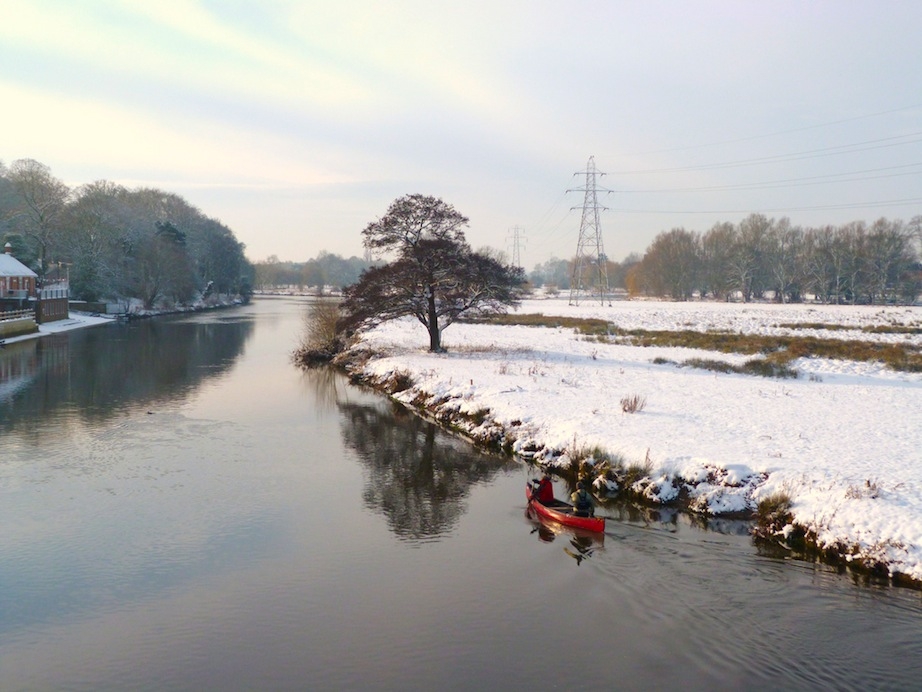
Go on a wood hunt.
Nights near the Canoeroots magazine office are currently 15 hours long, leaving only nine hours of possible sunshine. When the sun sets at 4:30 p.m., a cozy campfire might be the only way to avoid a 6 p.m. bedtime. If you have the option, and portages are short, consider bringing a bag of bought firewood. It’ll help lessen the impact on the forest around your campsite and allow you to enjoy more of the evening outside. Bring a firestarter with you (eg. birchbark or the store-bought synthetic variety), and keep it and your matches or lighter in a waterproof container.
Don’t push yourself too far.
By paddling in the shoulder season canoeists expose themselves to more environmental risk, that’s a fact. Don’t further increase your risk by trying for a marathon paddle or venturing into an unknown area. Now is not the time to push the limits of experience and ability.
Common sense.
Safety systems paddlers should follow on every backcountry trip still apply. Tell someone where you are going and when to expect you back. Have a bailer bucket, buoyant line and whistle on board. And wear a PFD on the water at all times—no exceptions. While a ditch kit is always ideal in the backcountry, it’s an essential in the off-season.
What are your tips and advice for late-season canoeing? Share them with us below.
This photo was provided by Flickr user steve p2008 and licensed through the Creative Commons.



